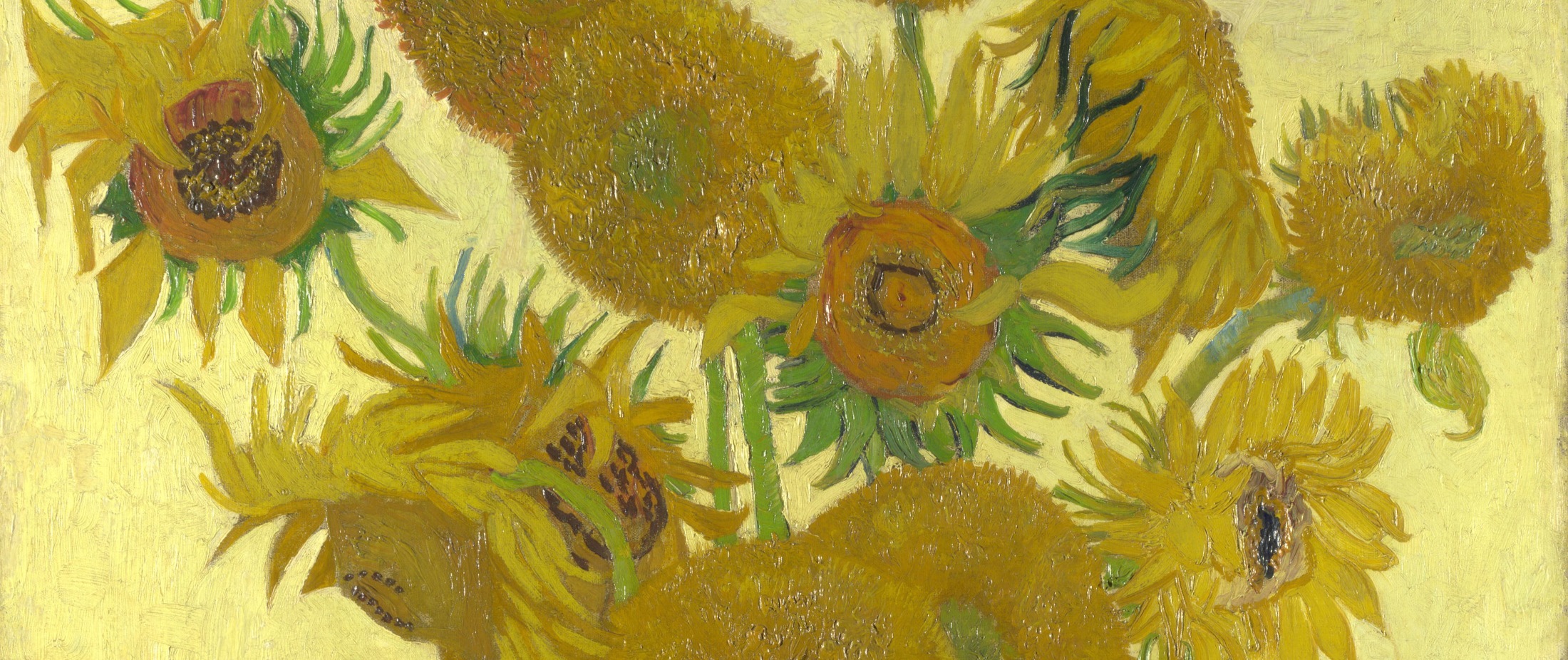
Vincent van Gogh: His most famous paintings
The Dutch Post-Impressionist painter Vincent van Gogh was born in Zundert, Netherlands on the verge of Spring on March 30, 1853. Driven by his intense passion for painting and enduring periods of melancholy, Van Gogh ultimately rose to become one of the most renowned and influential artists in history. His art can be found in the permanent exhibition of some of the most significant museums which host countless visitors every day. Here we delve into his life and some of his most famous paintings.
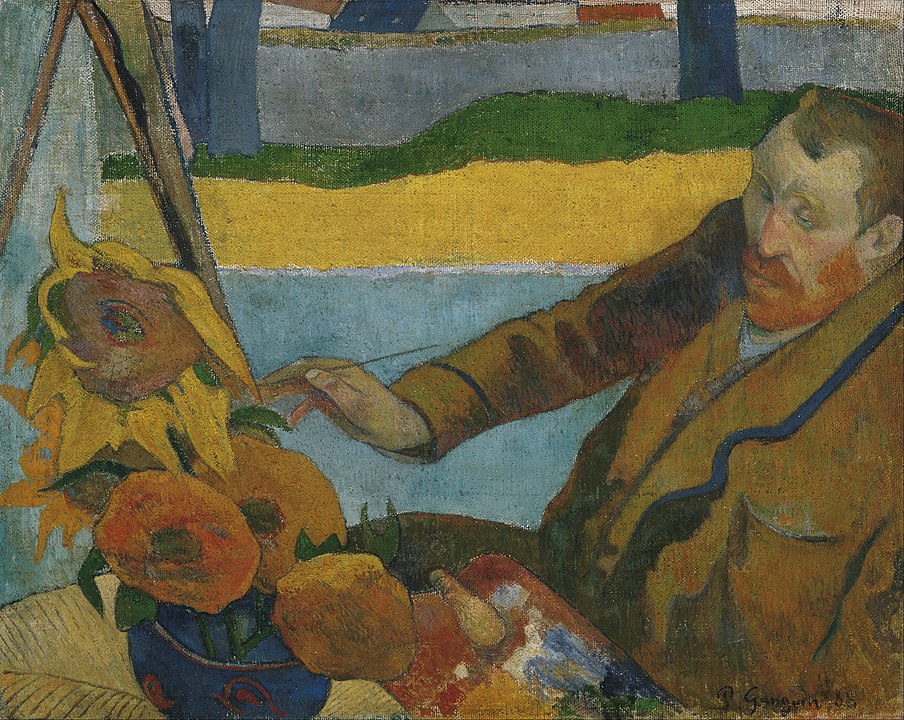 The Painter of Sunflowers: Portrait of Vincent van Gogh, Paul Gauguin, c. 1888. Van Gogh Museum, Amsterdam
The Painter of Sunflowers: Portrait of Vincent van Gogh, Paul Gauguin, c. 1888. Van Gogh Museum, AmsterdamVan Gogh's early life and career
Van Gogh led a charismatic life, full of personal sorrows, poverty, and isolation. He had worked as an art dealer, and later even as a missionary, but he was slowly moving toward his greatest passion: painting. Throughout his life, he was never appreciated as an artist, nor was there a demand for his paintings. He was mostly financially supported by his brother, Theo. Despite that, Van Gogh continued to paint and share his unique vision, creating outstanding works of art that are known and beloved all over the modern world.
1. The Starry Night, 1889
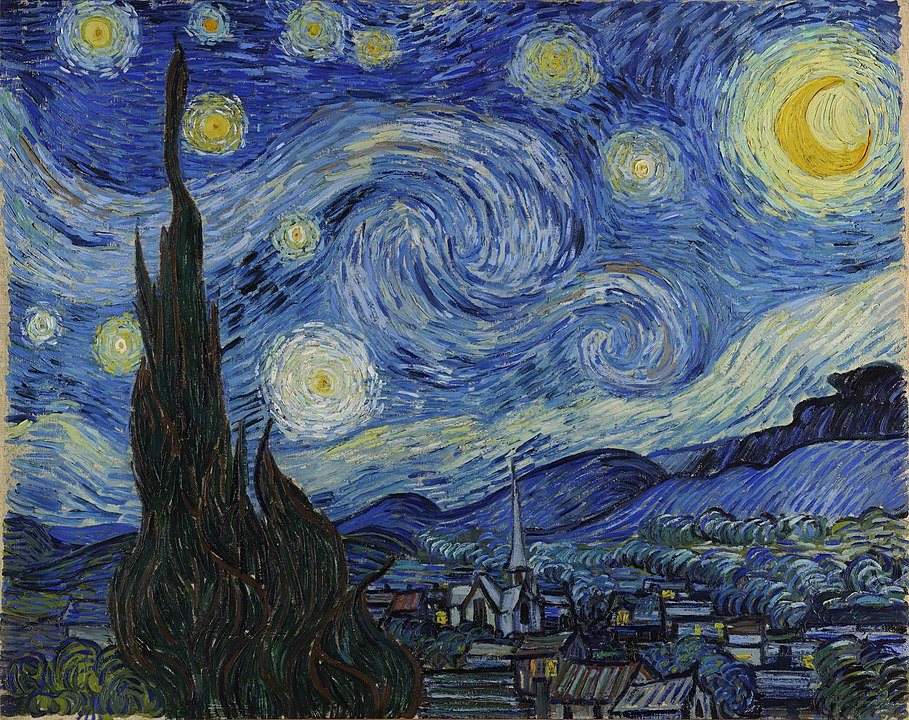 The Starry Night, Vincent van Gogh, c. 1889. Museum of Modern Art
The Starry Night, Vincent van Gogh, c. 1889. Museum of Modern ArtFor most of his adult life, Van Gogh suffered from severe depression and anxiety. In 1889, after a mental breakdown, he was admitted to the asylum in Saint-Paul-de-Mausole, where he spent around a year. At the asylum, he famously cut off one of his ears after getting into an argument with Paul Gauguin.
The period spent at the asylum was very productive for Van Gogh. His famous ‘The Starry Night’ was also created during this period, and it actually depicts a view from his asylum room. Even though the painting portrays the scenery from Van Gogh's asylum room, art historian James Hall has proposed that the painter may have drawn inspiration to create 'The Starry Night' following the evening of the opening of the famous Eiffel Tower. Van Gogh was troubled by humanity's obsession with technology, and he was disappointed to see the grand opening of the Eiffel Tower obscuring the natural beauty of the night sky. In response, he painted 'The Starry Night', which captured the true essence of nature's magnificence and emphasized its superiority over the artificial world.
The painting is renowned for its vibrant color palette and its expressive, swirling brushstrokes that exude a sense of movement. The night sky's vibrant blues and yellows contrast sharply with the village's warm colors, creating a vivid visual contrast that draws the eye in. One of the most recognizable and iconic paintings in history, ‘The Starry Night’ stands for inspiration, and innovation, and is one of the most remarkable results of Van Gogh's mastery.
‘The Starry Night’ is part of the permanent collection of the Museum of Modern Art (MoMA) in New York City.
2. Sunflowers, 1888
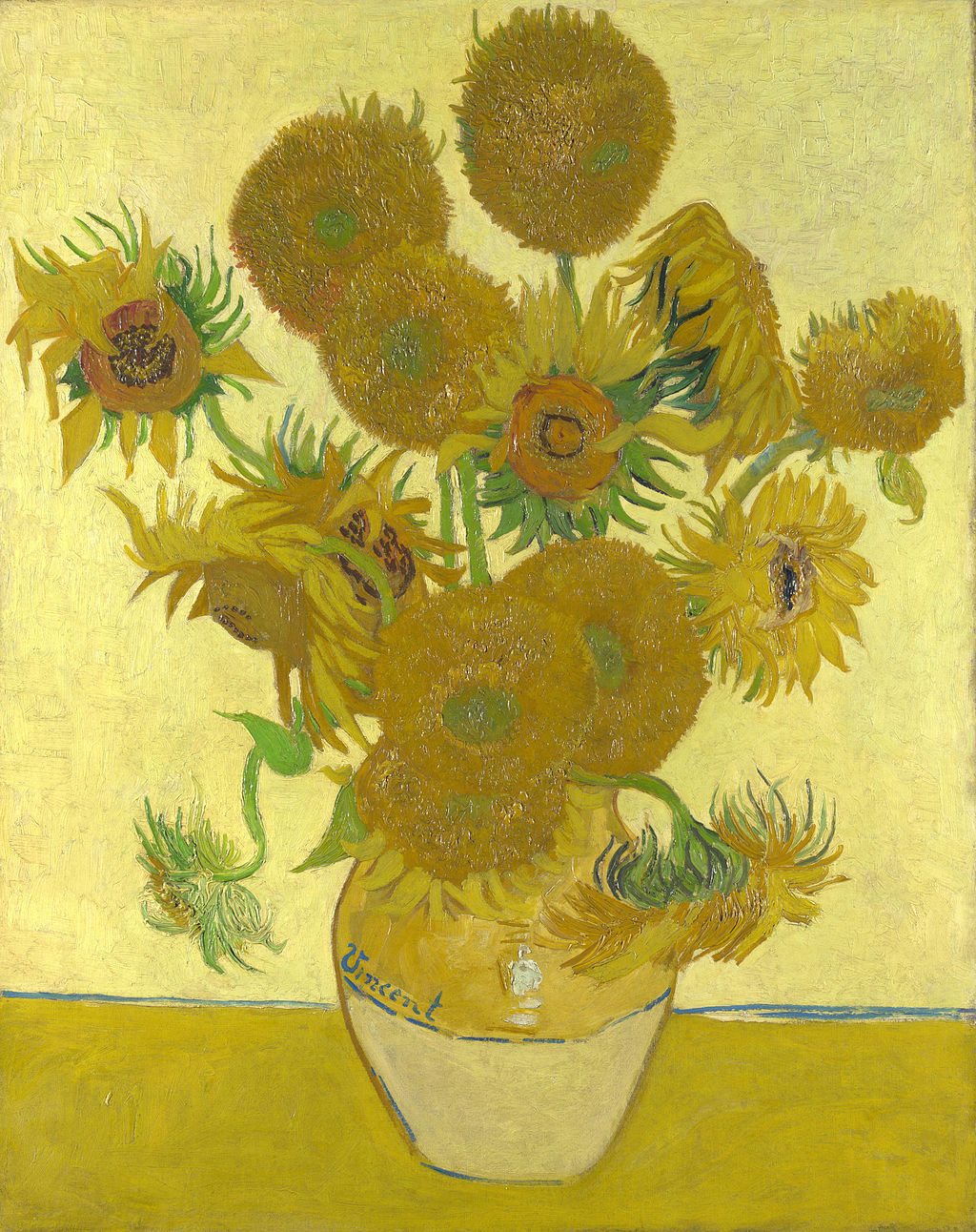 Sunflowers, Vincent van Gogh, c. 1888. Van Gogh Museum, Amsterdam (Vincent van Gogh Foundation)
Sunflowers, Vincent van Gogh, c. 1888. Van Gogh Museum, Amsterdam (Vincent van Gogh Foundation)Perhaps every artist has a muse, and Van Gogh was no exception. He drove inspiration from nature, and the sun, with its golden yellow color, was one of his greatest muses. ‘Sunflowers’ is a great example of Vicent’s joint love for nature and above all domination of the yellow color in it. There are many theories to explain his excessive use of yellow, but the most reliable one suggests that the inspiration arose from living in Arles, the south of France.
‘Sunflowers’ is a series of paintings that were created during this time between the years 1888 and 1889. The joyful and fresh nature of Southern France inspired the painter to create paintings of sunflowers, rich in yellow and orange hues. Like all of his other work, ‘Sunflowers’ are full of emotions, and exude vibrant energy. Van Gogh painted them during a great financial crisis, and through sunflowers, which for him mirrored the beauty of the sun, he found inspiration and hope for the future. These paintings carry the same essence, leaving each and every spectator full of warmth and inspiration.
3. Café Terrace at Night, 1888
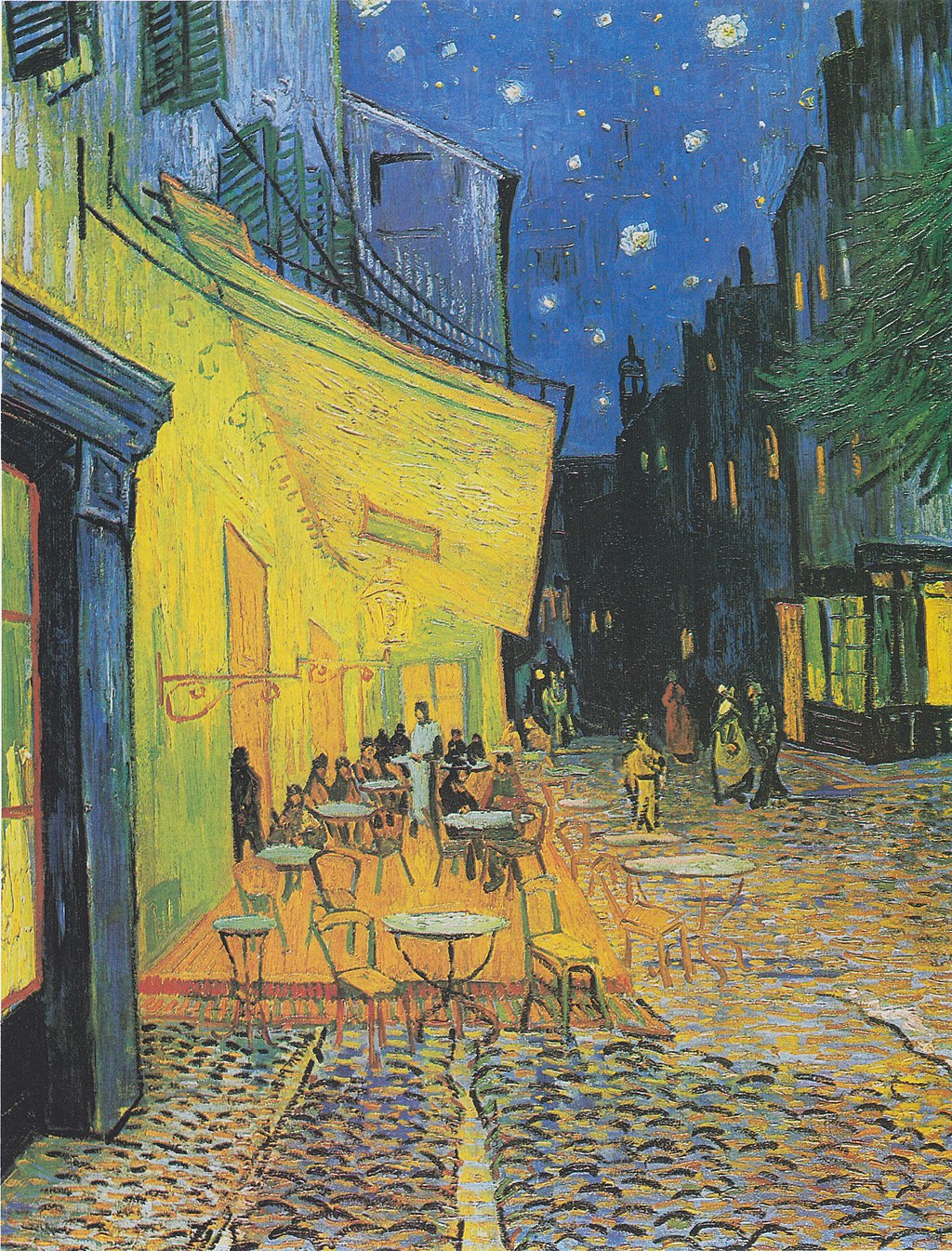 Café Terrace at Night, Vincent van Gogh, c. 1888. Kröller-Müller Museum
Café Terrace at Night, Vincent van Gogh, c. 1888. Kröller-Müller MuseumAnother important painting created in 1888 during his stay in Arles was ‘Café Terrace at Night’. Today the painting is one of the most celebrated works of Van Gogh, however, there is a deeply personal connection between the author, his feelings and the emotions conveyed through this particular piece. As Van Gogh once wrote to his brother:
I have tried to express the idea that a café is a place where one can ruin oneself, go mad or commit a crime.
Social interactions never came easy for Van Gogh. In fact, he suffered from isolation, and led a reserved life. He frequently visited local cafes, where he was a famous drinker, and not specifically liked by the locals, most of which considered him a little too peculiar. But when looking at his painting all one can feel is coziness and peace. A vibrant, yet comforting setting reflects a peaceful evening in Arles’ café, where locals are enjoying their slow lives. Going back to Van Gogh’s phrase, it is less likely that he ever enjoyed the same sense of peace, but for us, he managed to keep the most transparent image of the night, that transports viewers to the random, beautiful evening in 1888 Arles.
4. Self-Portrait, 1889
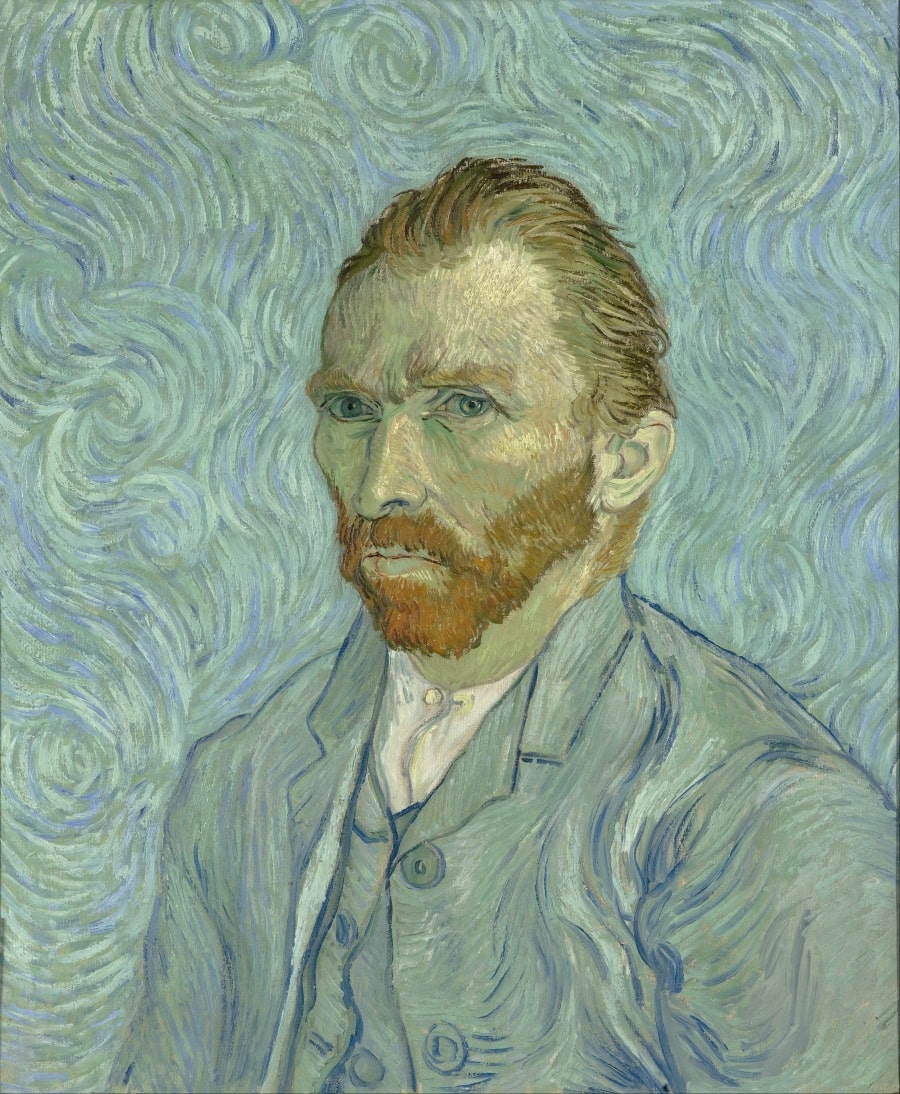 Self-Portrait, Vincent van Gogh, c. 1889. Musée d'Orsay
Self-Portrait, Vincent van Gogh, c. 1889. Musée d'OrsayNow kept in the Musée d'Orsay of Paris, Van Gogh’s self-portrait of 1889 is the special one, since it was one of the last self-portraits of the painter. Over the period of 10 years, Van Gogh created around 32 self-portraits. Each one of them reflects a specific stage in his life. The 1889 portrait was painted during his stay at the asylum, where his sense of isolation grew even more. The original style, strong, yet soft brush strokes, and refined colors, all unite and create an image of one of the saddest faces. Full of melancholy, and the loss of hope, the portrait is a mirror of the painter’s condition not long before his suicide. In the painting, the loneliness and the pain of his mental state are developed in the turmoil of colors while the viewers are left with an intimate experience of exploring the most personal feelings of its author.
5. Vincent’s Bedroom in Arles, 1889
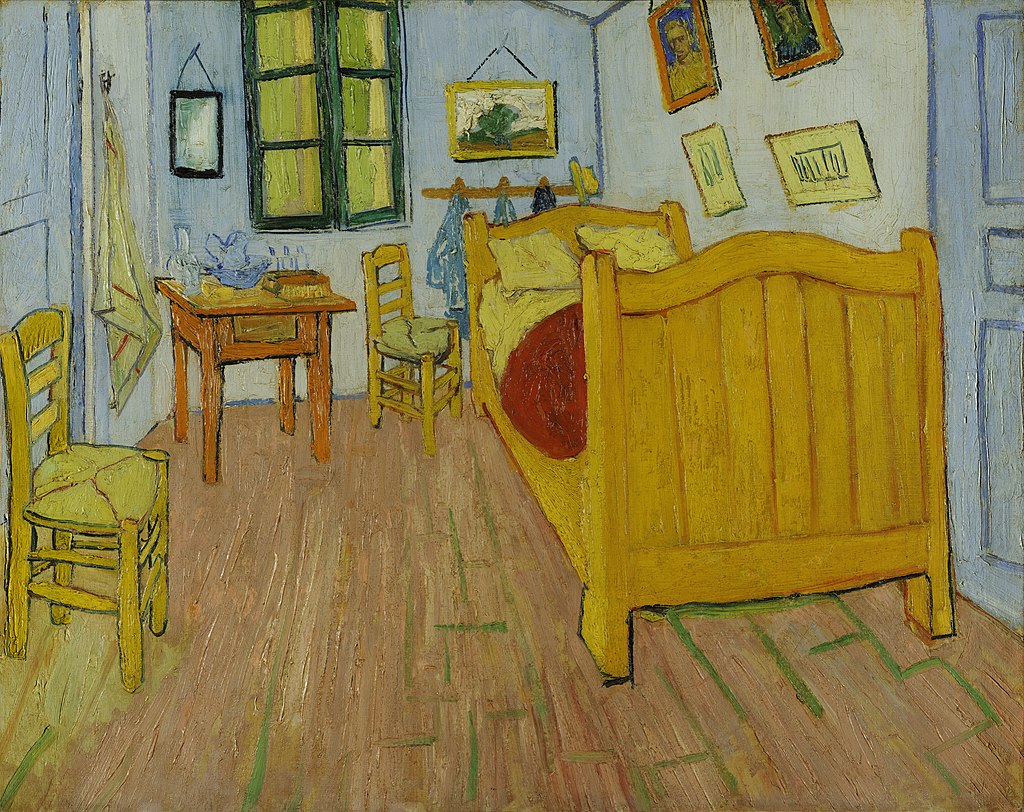 Vincent’s Bedroom in Arles, Vincent van Gogh, c. 1889. Van Gogh Museum, Amsterdam (Vincent van Gogh Foundation)
Vincent’s Bedroom in Arles, Vincent van Gogh, c. 1889. Van Gogh Museum, Amsterdam (Vincent van Gogh Foundation)Van Gogh titled this composition ‘The Bedroom’. In his letters, he described three authentic versions of the painting, which can be easily distinguished from one another. The painting is a depiction of the Yellow House and presents a close glimpse of his personal space. Van Gogh had a distinct and profoundly personal perspective on the world, and his work frequently echoes his vision. ‘Vincent's Bedroom in Arles’ is a prime example, as it conveys the feeling of closeness and ease that he experienced in privacy at his Yellow House. Painted in 1888, the piece marks his transition into brighter and more expressive colors. The yellow dominates the painting, bringing a feeling of intimacy to the room. As one of the most iconic paintings in the history of art, ‘Vincent’s Bedroom in Arles’ offers a glimpse into the most intimate, delicate, and personal space of the great painter, which is forever kept in the light of its golden hues.
Van Gogh's tremendous legacy
Van Gogh revolutionized the art world and opened the way for modernist movements like Expressionism and Fauvism with his distinct style, bold use of color, and brushwork. His life was defined and driven by his talent, and despite poor health, mental and financial difficulties, he never stopped painting.
Through his work, Vincent shares the deepest and most personal feelings, yet the darkness and melancholy of these sorrows are painted with the most wonderful combinations of colors and in a distinctive, unique style. His work is the softest, most delicate example of communication of a man with himself, and of an artist with the world.
The artist’s impact on modern culture
With his unique vision, Van Gogh left a significant impact on culture, inspiring film directors, writers, and simply all the visionaries around the world. Films like ‘Loving Vincent’, and the appearances in the iconic TV shows, such as ‘Doctor Who’, show that Van Gogh continues to be the inspiration of millions of people around the world. Even though he was never appreciated by his contemporaries, he gave a vision of the future, which shaped the way we see and perceive the world.
As an Art de Vivre subscriber, don’t miss out on other inspiring content such our deep-dive into the world’s most expensive paintings.
Credits for the Main photo: Sunflowers, Vincent van Gogh, c. 1888 Van Gogh Museum, Amsterdam (Vincent van Gogh Foundation)
